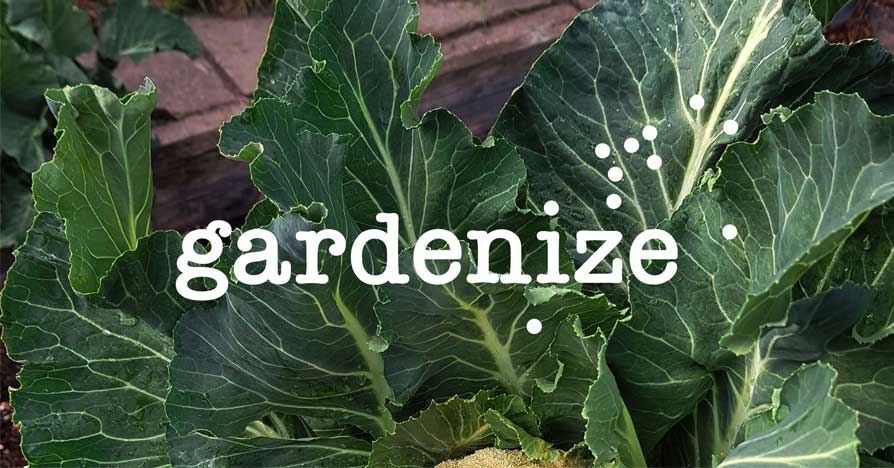Upside-down gardening: January in Central Otago
A glorious jumble. Accepting a little messiness: hypericums, lilies, parsley, letting things go to seed, waiting before you prune. An Australian borrowed landscape. Also, seeds to sow in January.
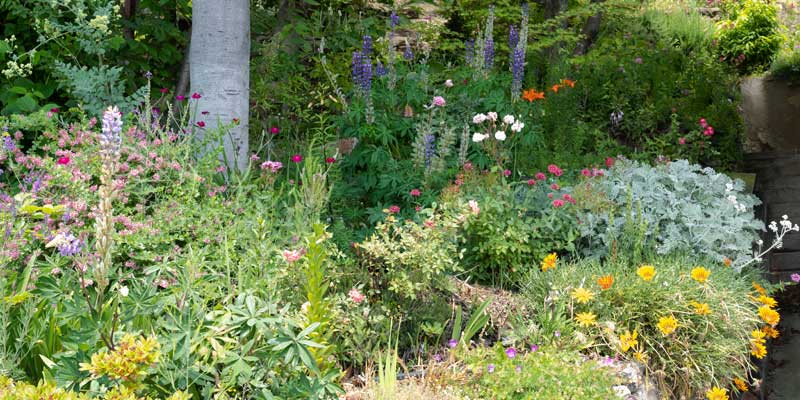
Nature helps
We’ve had covid and that has slowed us down considerably. I suppose there are always excuses, but the garden has become a little untidy. Luckily, because it is filling up, I think it still looks beautiful. Nature is messy, so maybe I shouldn’t mind about a little untidiness. The picture at the top of this article shows the garden on the right side of the house. It shows blue lupins going to seed, pink roses, orange gazanias, pink centranthus, fluffy yellow thalictrum, silver-grey senecio and pink-flowering escallonia.
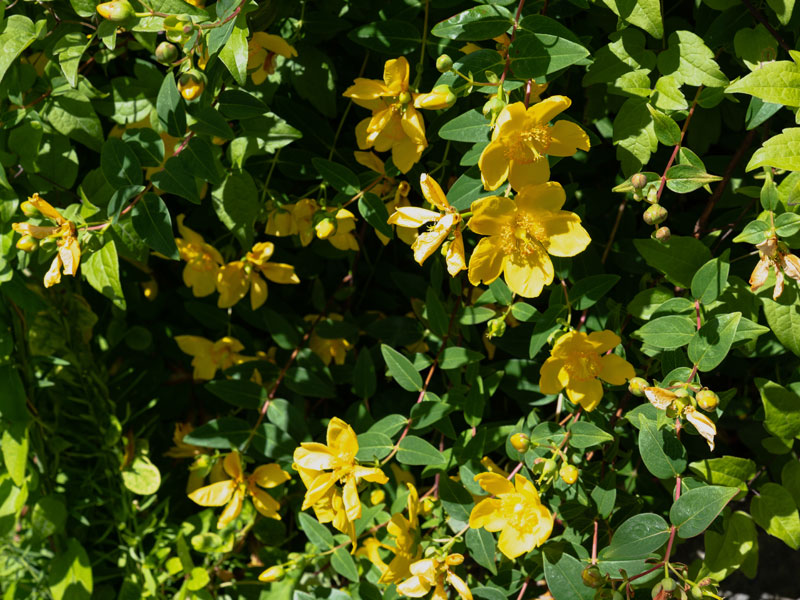
Hypericums
My husband would like me to prune this shrub right now, because it gets in the way when we walk up the steps to the back garden. To me, it exemplifies the idea of a glorious jumble. It has a wild clematis and an interestingly variegated honeysuckle growing through it.
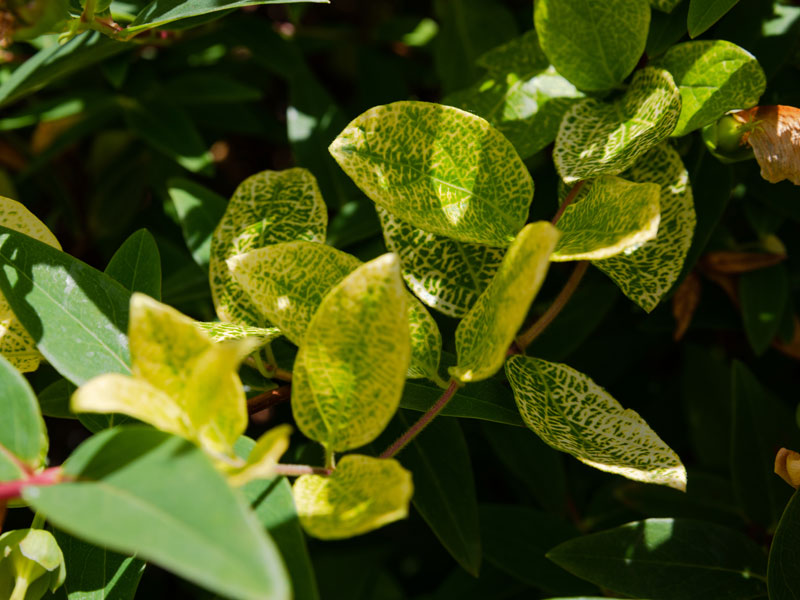
Honeysuckle
Growing through the hypericum is this interestingly variegated honeysuckle. As soon as the hypericum has finished flowering, I’ll prune it back hard to just a couple of inches above ground. The honeysuckle growing through it will also receive the same treatment. Both will grow even more vigorously after their haircut.
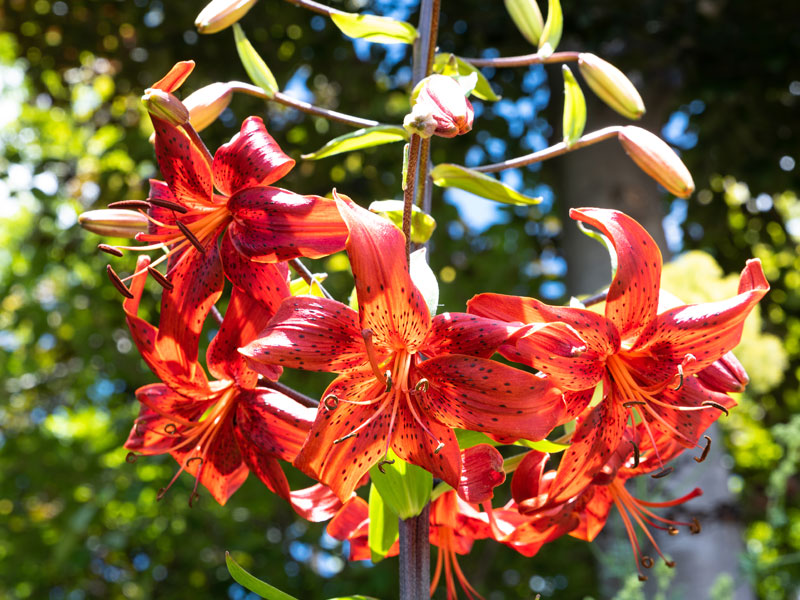
Lilies
Lilies are associated with Christmas here, and they make a spectacular show, looking lush even in the heat and dryness of high summer. They start to flower in mid-December and continue into January. They produce more bulbs deep underground, so they benefit from being split up every three years or so. You’ll need to dig deep to avoid damaging the bulbs.
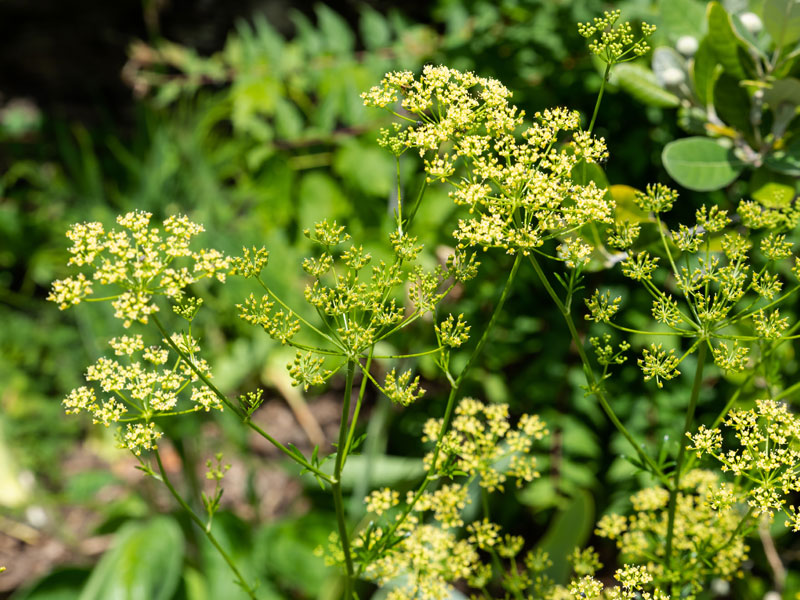
Saving seed
Parsley is biannual, so it produces leaves for the kitchen in its first year, but in its second year, it develops flowers, then seed and then dies. A tidy gardener might be tempted to pull it up once it develops flower stems, but all parsley flowers, like the ones from Italian (flat leaf) parsley above, are dainty and lacy, typical of umbellifers. As well as saving you money, saving seed from your garden helps to ensure that your seedlings are adapted to the conditions in your garden. Be careful not to save seed from plants that have bolted (gone to flower) early, as you are then perpetuating the tendency to bolt early in your breeding stock. Seed saved from hybrids is unlikely to resemble the plant you took it from. If you have plenty of space and time, you may get some interesting results, but don’t count on it.
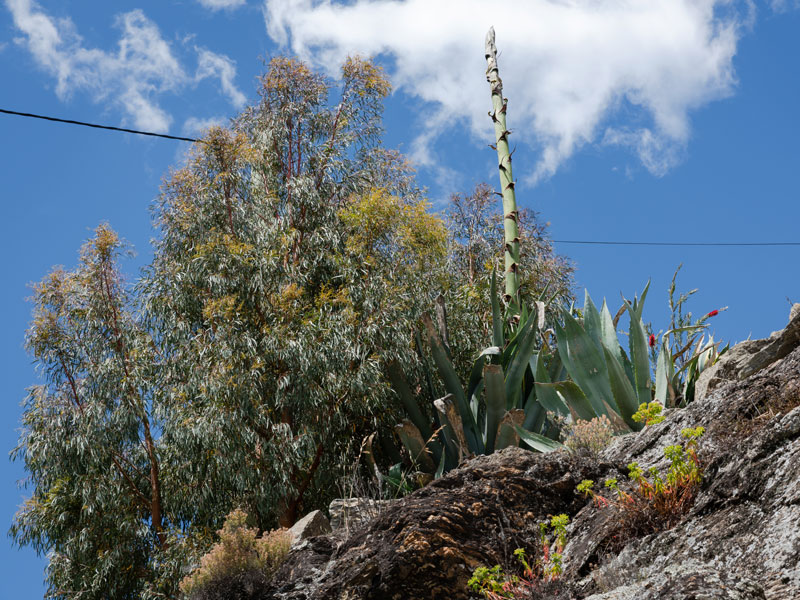
A borrowed landscape
After the lush, dreamy planting in our borders, it’s good to see some tougher, more exotic (to me) plants up on the rocks above our house. This century plant (agave) originally from America, has sent up a tall flower spike that is noticeably bigger each day. It looks good between the eucalyptus and bottle brush plants (both originally from Australia)
Garden jobs for January
January is usually baking hot and dry. Your main priority will be protecting seedlings from the fierce sun and making sure all your plants are getting enough water, especially newly planted ones.
Seeds to sow
You can direct sow dwarf beans, beetroots, carrots, and radishes. To encourage germination of the seeds, you will need to keep them damp, especially carrots. One suggestion is to place a plank on top of the row after sowing, then check it daily so that you can remove it as soon as the seedlings appear. In milk bottles or trays in a sheltered part of the garden, you can sow lettuce, parsley, Swiss chard (silverbeet), and sweet corn.
Seedlings to plant out
Basil, celery, Swiss chard (silverbeet) and courgettes. Basil likes a little shade and some air humidity, so if you have it in pots, put it amongst other pots in a sheltered spot.

About the writer
My name’s Pamela and a few years ago, at the age of 55, I made the decision to start a new adventure. I left the northwest of England, where I had lived all my life, and moved to New Zealand. I’m excited to be a guest blogger on Gardenize, and I love writing about my garden in beautiful, sunny Alexandra in Central Otago. My garden here is about as different as it could get from the damp, shady garden I left behind. Central Otago is the hottest, driest, coldest area in New Zealand, as we have hot summers and cold winters, along with a semi-arid climate. The area is famous for its orchards and vineyards. It has many quaint little rural townships with pretty cottage gardens featuring peonies, bearded irises, hollyhocks, lilies, roses, and lavender that grow so well here. The landscape is spectacular, with dry, rocky mountains and impossibly blue lakes and rivers. The dry mountains look barren, but they’ve actually covered in tough little thyme plants: a great clue to what might grow well in the garden.
GARDENIZE GARDEN APP
A gardening friend with a green thumb and photographic memory
Gardenize is an app for gardening and cultivation that helps you to overview, understand and develop your garden and your gardening skills.
Order makes it easier to succeed and Gardenize structures information and photos and makes it searchable for you. You also get tips and inspiration from other Gardenizers around the world.
Gardenize is free to use and you can download Gardenize from the App Store or Google Play, or create an account the Gardenize web app for web browsers.
Get to know Gardenize better here.

